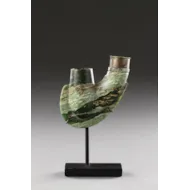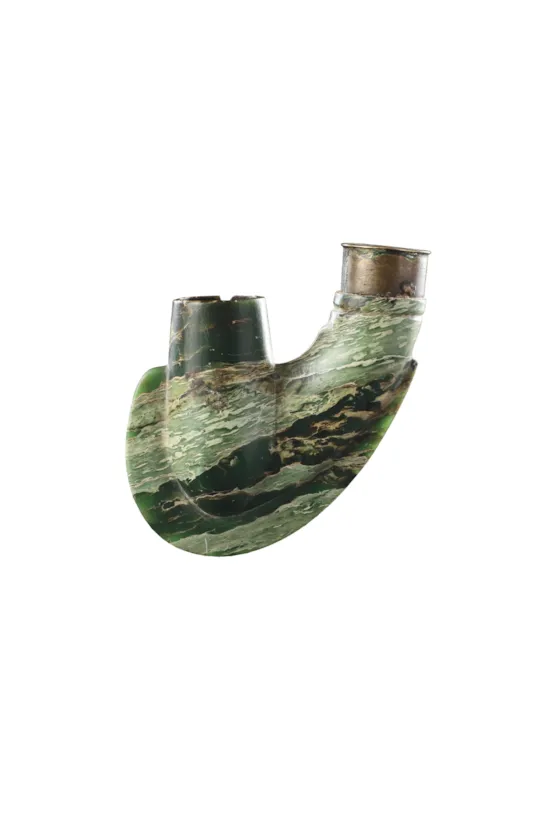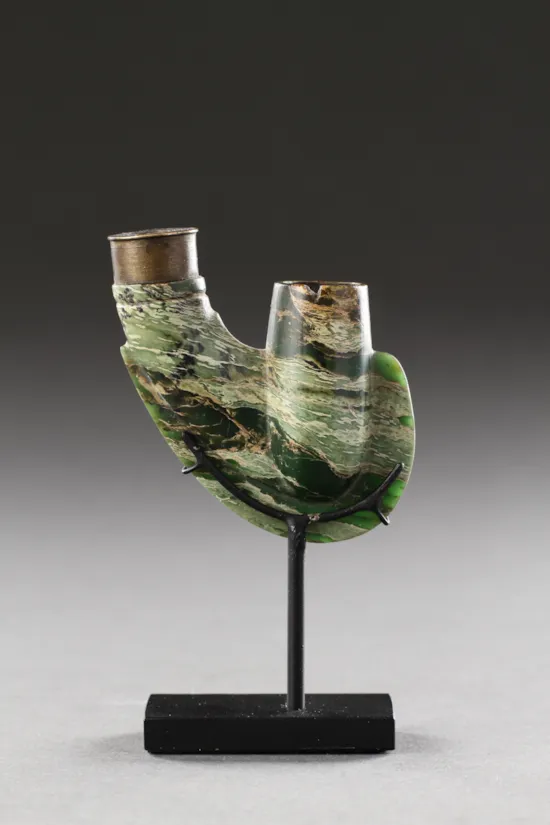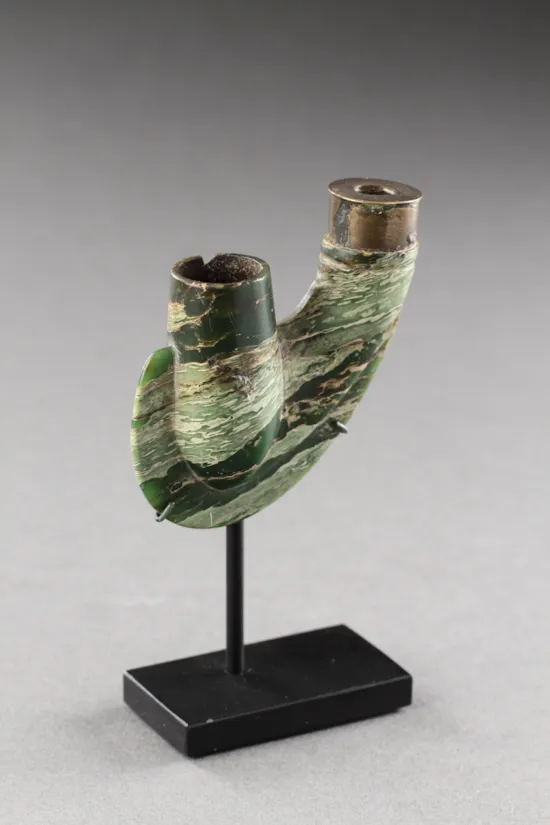A Khoisan Tobacco Smoking Pipe
A Khoisan Tobacco Smoking Pipe
Carved of a variegated green soapstone in the ‘Dutch’ style (small chip)
Soapstone, metal
South Africa
19th Century
SIZE: 6cm high, 5.5cm wide, 2cm deep - 2¾ ins high, 2¼ ins wide, ¾ ins deep
Carved of a variegated green soapstone in the ‘Dutch’ style (small chip)
Soapstone, metal
South Africa
19th Century
SIZE: 6cm high, 5.5cm wide, 2cm deep - 2¾ ins high, 2¼ ins wide, ¾ ins deep
A Khoisan Tobacco Smoking Pipe
Carved of a variegated green soapstone in the ‘Dutch’ style (small chip)
Soapstone, metal
South Africa
19th Century
SIZE: 6cm high, 5.5cm wide, 2cm deep - 2¾ ins high, 2¼ ins wide, ¾ ins deep
Carved of a variegated green soapstone in the ‘Dutch’ style (small chip)
Soapstone, metal
South Africa
19th Century
SIZE: 6cm high, 5.5cm wide, 2cm deep - 2¾ ins high, 2¼ ins wide, ¾ ins deep
The carving of pipes among the Zulu speaking peoples of South Africa represents an artistic use of form which is not found in other objects, despite other artefacts such as beadwork being of equal cultural and social importance.
Among smokers, pipes were used as indicators of social status and in general men’s pipes had broader bowls which held more tobacco while women’s pipes had a smaller capacity. Smoking was an important communal activity, and a lit pipe would be shared within a group with each member having their own removable mouth piece.
Traders from Europe first introduced tobacco to South Africa in the 16th century and within 100 years it was grown, dried, prepared and smoked by nearly all of the Black peoples of South Africa. Carvers in the Eastern Cape modelled the form on the original Dutch and English 17th century clay tavern pipes.
Among smokers, pipes were used as indicators of social status and in general men’s pipes had broader bowls which held more tobacco while women’s pipes had a smaller capacity. Smoking was an important communal activity, and a lit pipe would be shared within a group with each member having their own removable mouth piece.
Traders from Europe first introduced tobacco to South Africa in the 16th century and within 100 years it was grown, dried, prepared and smoked by nearly all of the Black peoples of South Africa. Carvers in the Eastern Cape modelled the form on the original Dutch and English 17th century clay tavern pipes.
Ex Jacaranda Gallery LLC, New York City, USA, 2012
Ex Private collection
Ex Private collection
A Khoisan Tobacco Smoking Pipe














